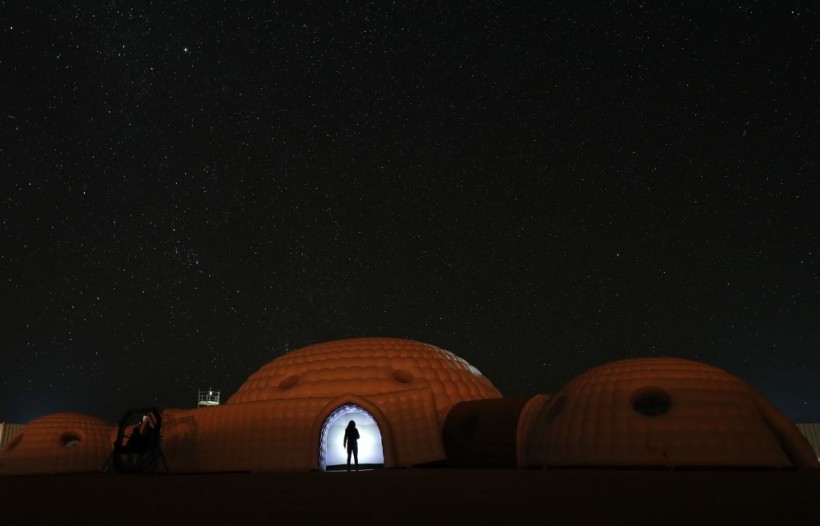Living on planet Mars has been one of the main interests of the astronomical field throughout the decades of research. For years, many innovations have been conceptualized to fit the expected environment and living requirements on the red planet. Today, the developments are still ongoing, and several preparations might soon be tested for Martian use.
Mars Alpha Dune

TOPSHOT - A picture taken on February 7, 2018 shows a member of the AMADEE-18 Mars simulation mission wearing a spacesuit standing in the doorway of a simulation habitat, with a view of the night sky above in Oman's Dhofar desert, during an analog field simulation in a collaboration between the Austrian Space Forum and the Oman National Steering Comittee preparing for future human Mars missions.
Mars Dune Alpha, a 3D printed habitat, is one of the newest and largest projects being made at the moment. The idea was conceptualized by the prestigious Bjarke Ingels Group (BIG) along with the support from NASA.
The Mars Dune Alpha holds a collection of architectural plans that can work with the harsh place and conditions right on the Martian soil.
For the potential homes to work, many aspects of the design and architecture must be tested first. In a report by My Modern Met, the first few phases are now in place. The examination of Mars Dune Alpha is being led by the construction technology enterprise called ICON.
The test prints of the 3D structure are currently under observation back to Houston's Johnson Space Center. In the base, the 1,700-foot facility will be assembled soon to give way for the NASA Space Technology Mission Directorate (STMD), as part of the wider Crew Health and Performace Exploration Analog (CHAPEA).
Mars Dune Alpha will be tested along with a year-long Mars-living simulation beginning this year. The participants for the study are expected to meet the near-Martian conditions on the simulation, including a harsh environment, limited resources, tight space, and other circumstances controlled by the experts.
The simulation will also include some research held inside the simulation. After the first year of the tests, a two-year follow-up will be laid out for selected astronauts to match the anticipated standards on Mars.
ALSO READ: Ex-NASA Manager and Axiom Space CEO Michael Suffredini Eyes Making $3 Billion Space Station
3D-Printed Martian Habitat for Long-Term Missions
Bjarke Ingels said in the report that the data collected for the Mars Dune Alpha habitat development is strictly relayed to NASA for analysis regarding long-term missions. The experts from the architectural firm believe that, with the completion of the habitat, humans will have a stepping stone towards being a multi-planetary species.
Mars Alpha Dune will include organizations based on what people commonly have in their earthly homes. In addition to the usual house spaces, there will be laboratories and other specialized facilities for studies on the planet. Private living quarters, medical stations, workstations, mini-farm, and living rooms are among the few divisions designed for the habitat.
The ceiling will vary in height depending on the space provided by a certain room. A massive arch design will be observable once the architecture is complete.
Mars Dune Alpha is being developed by BIG and ICON. According to the report, both firms have been working together with NASA for a separate program called Project Olympus. While the first innovation is focused on Mars, Project Olympus is dedicated to solving how materials from the moon will be utilized in 3D architectural printing.
RELATED ARTICLE: Planet Jupiter a Hoax? Expert Debunks Gas Giant Deniers
Check out more news and information on Space in Science Times.














